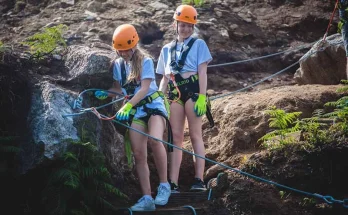Let’s be honest—camping is all about connecting with nature. But if we’re not careful, our love for the outdoors can leave a bigger footprint than we’d like. The good news? With the right gear and habits, you can minimize your impact while still enjoying the wild. Here’s the deal: sustainable camping isn’t just a trend; it’s a necessity. And honestly? It’s easier than you think.
Why Sustainable Camping Matters
Think of nature like a borrowed tent—you wouldn’t trash it before returning it, right? Well, the same goes for the environment. Traditional camping gear often relies on synthetic materials, single-use plastics, and energy-intensive production. In fact, the outdoor industry contributes to 4% of global plastic waste. That’s a lot of discarded tents and water bottles.
Eco-Friendly Camping Gear: What to Look For
1. Tents and Shelters
Not all tents are created equal. Many are made with PVC or polyester—materials that take centuries to decompose. Instead, opt for:
- Recycled materials: Brands like Big Agnes and REI Co-op now use recycled nylon or polyester.
- Natural fabrics: Canvas or hemp tents (though heavier) are biodegradable and breathable.
- Durability: A well-made tent lasts longer, reducing waste.
2. Sleeping Bags and Pads
Down vs. synthetic? It’s a debate. But here’s the twist: look for responsibly sourced down (RDS-certified) or recycled synthetic fills. Sleeping pads made from plant-based foam? Yes, they exist.
3. Cookware and Utensils
Ditch the disposable stuff. Bamboo cutlery, stainless steel mess kits, and silicone collapsible bowls are game-changers. And hey, a solar-powered stove isn’t just for hardcore survivalists anymore.
Sustainable Outdoor Practices
Leave No Trace (Seriously)
You’ve heard it before, but it bears repeating: pack out everything. Even biodegradable waste (like banana peels) can disrupt local ecosystems. Here’s a quick cheat sheet:
- Use biodegradable soap (sparingly).
- Stay on marked trails to avoid trampling fragile plants.
- Camp at least 200 feet from water sources.
Water Wisdom
Plastic water bottles? No thanks. A reusable filter or UV purifier means you can drink safely from streams without the waste. Pro tip: Collapsible water bladders save space and weight.
Fire Smarts
Campfires are iconic, but they’re not always eco-friendly. In drought-prone areas, skip the fire altogether. Otherwise:
- Use existing fire rings.
- Burn small, dead wood—never break branches.
- Opt for a portable stove when possible.
The Bigger Picture: Renting and Repairing
Here’s a thought: do you really need to own all your gear? Rental services (like Outdoors Geek or local outfitters) cut down on production demand. And if something breaks? Repair it. Many brands now offer lifetime warranties or free repair clinics.
Final Thoughts
Sustainable camping isn’t about perfection—it’s about progress. Maybe you start by swapping out your plastic utensils. Or maybe you go all-in with a solar-powered setup. Either way, the wilderness will thank you. After all, we’re just borrowing it.




